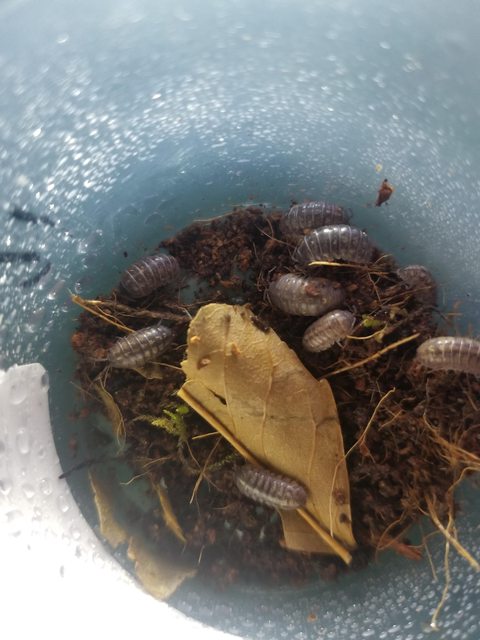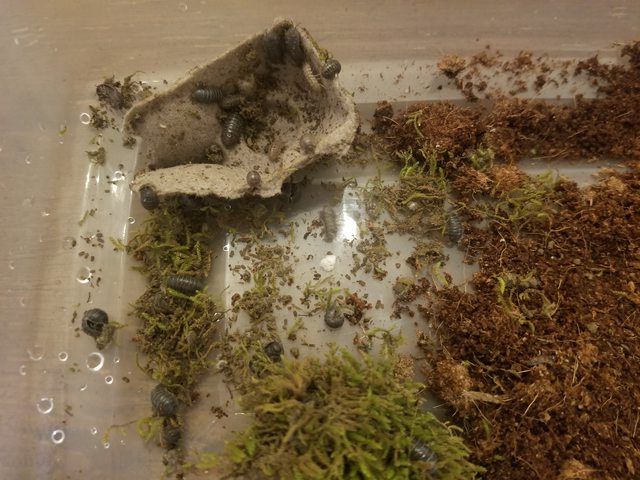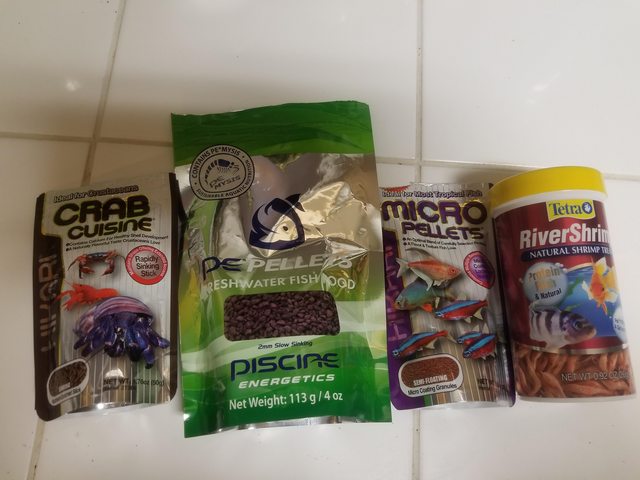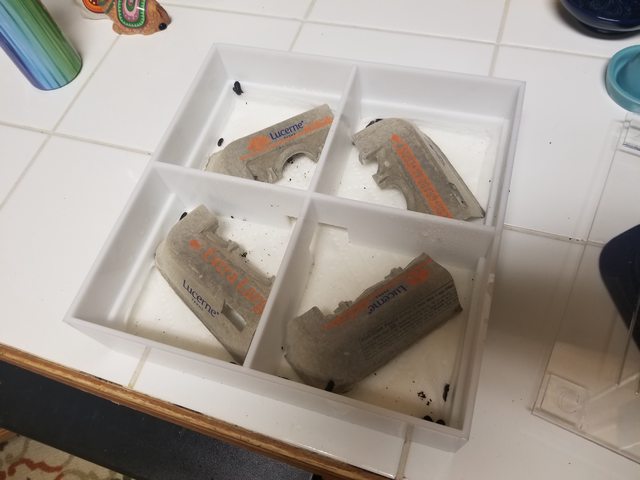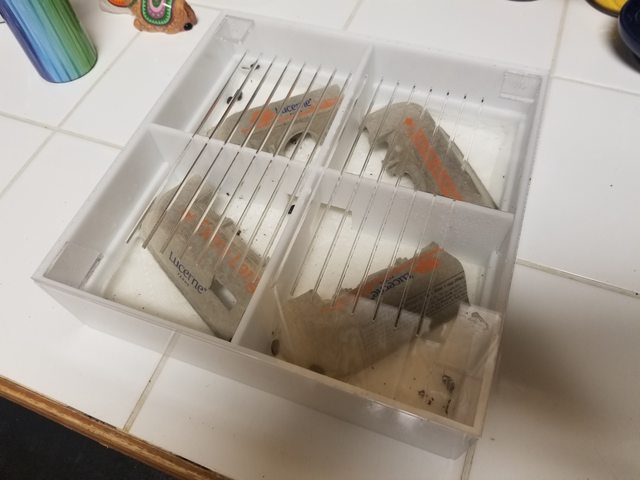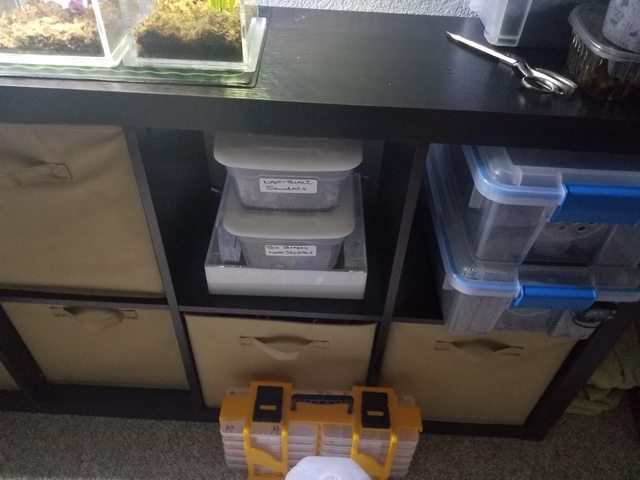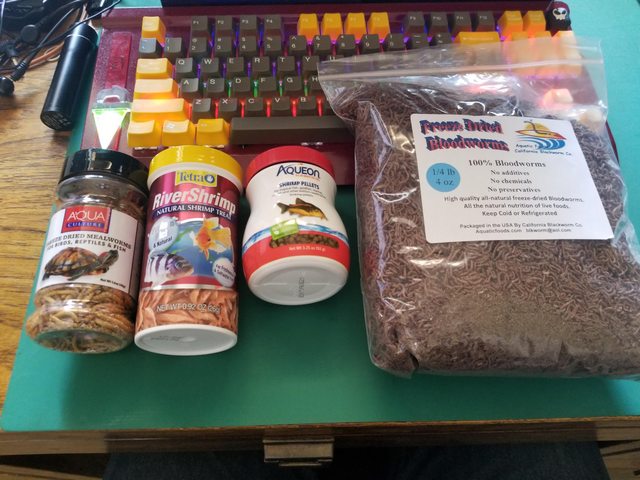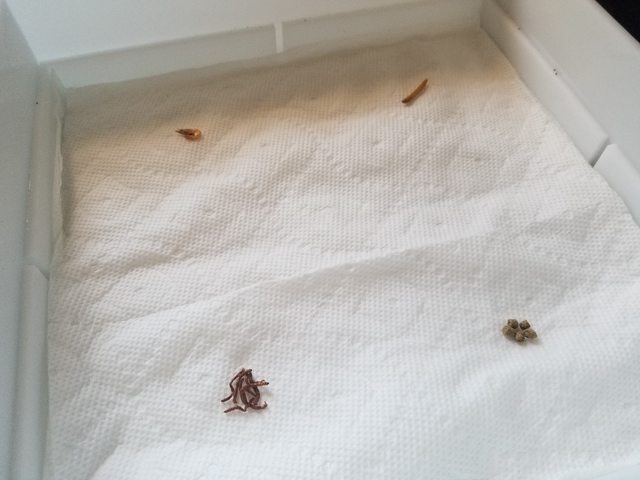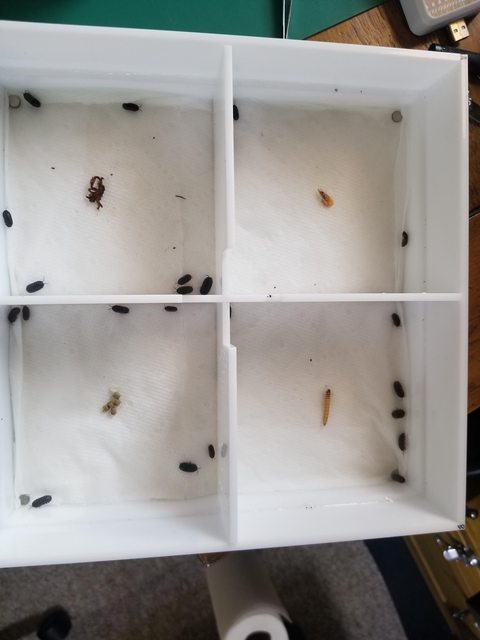I have recently decided to start an isopod breeding project. While I quite enjoy keeping mantises, I am not terribly interested in their breeding. Other invertebrates are much easier to breed since they are kept as a culture rather than individuals. Species that breed and live more quickly and have higher brood sizes are easier to conduct breeding projects on. Isopods are great because many types are polymorphic, most are easy to breed, and they take minimal maintenance. I am particularly fond of armadillidium vulgare since they are widespread, critical to many ecosystems, common, reasonably large, and can volvate (roll into a ball). My breeding project will seek to isolate a morph of A. vulgare starting with wild specimens from the Colorado front range. I am going to choose the morph based on what I can find locally.
Prior to starting the breeding project I am interested to run some tests to determine the preferred conditions for A. vulgare. Those tests are what this thread is about.
Special thanks to @Orin for writing the wonderful Isopods in Captivity book, and to other scholars like Isabel Caseiro, J.P. Sousa, and S. Santos (Optimization of Culture Conditions of Porcellio dilatatus for Laboratory Test Development, 1999) who have worked on studies that I have reviewed to help me figure out what I want to do. I will do my best to cite where possible. I intend for this to be a pseudo-scientific test; not up to true scientific standards, but following basic requirements like controlling other variables and ensuring the results are statistically significant. I understand there may be a significant difference between the conditions A. vulgare prefer, and the conditions under which they breed best/fastest, but I will only be testing for preference here. I will seek to conduct the test in an ethical fashion by not testing conditions that are known to damage isopods and only collecting specimens from areas where there is already an abundance.
Anyone with knowledge, corrections, links to existing studies, or suggestions, please chime in.
To conduct the study I will be using a choice chamber. Choice chamber experiments are generally conducted by placing specimens into a container with multiple chambers. Each chamber has different conditions. After a period of time, the specimens are counted in each chamber, and a chi-squared analysis is conducted to determine whether the results are statistically significant. For instance, if you place 10 specimens in a two-chamber choice chamber apparatus and each chamber has 5 specimens after a period of time, that would not be statistically significant because we would expect such a result by chance. If you found 10 in one side and 0 in the other, that would be statistically significant. If the results are statistically significant, the isopods prefer the condition where more of them appear. If not, they don't have a strong preference either way. The bigger the sample, the more granular and accurate the results will be.
To conduct the test I have designed a modular choice chamber. It is a 10x10x2.5" box made of white opaque acrylic. The modular dividers allow the box to be divided into 2 connected chambers, 4 connected chambers, or two pair of connected chambers. When I transition the project to breeding, The dividers can separate the box into non-connected chambers as well by inverting them. The lid is made from clear acrylic with narrow vents cut into the lid to allow some ventilation without excessive moisture loss (and hopefully no gnats). Each corner of the lid is labeled with a laser-engraved letter to allow me to easily keep track of each over time. Here are photos of the apparatus:
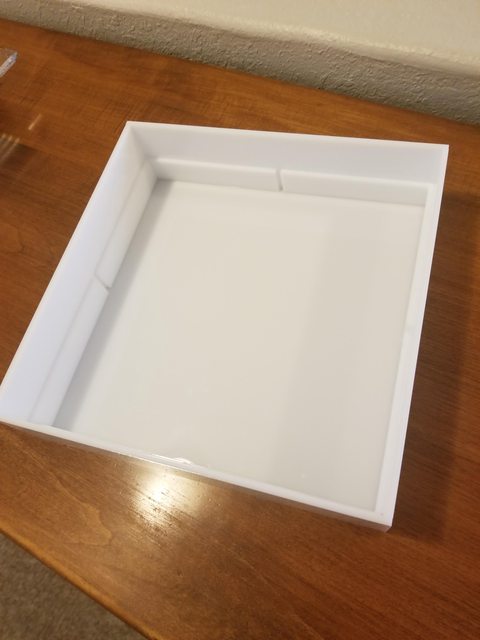
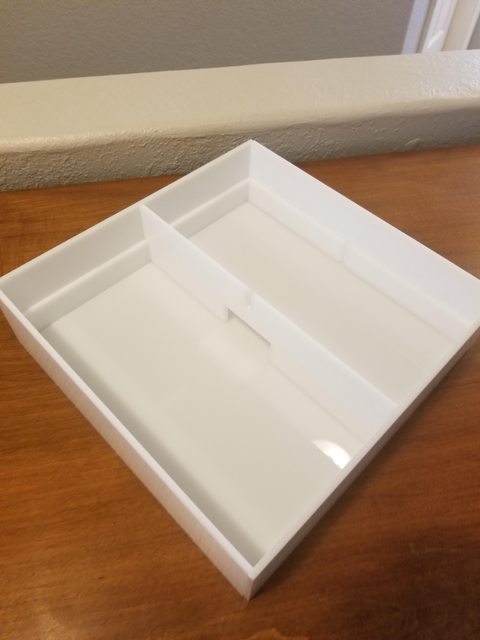

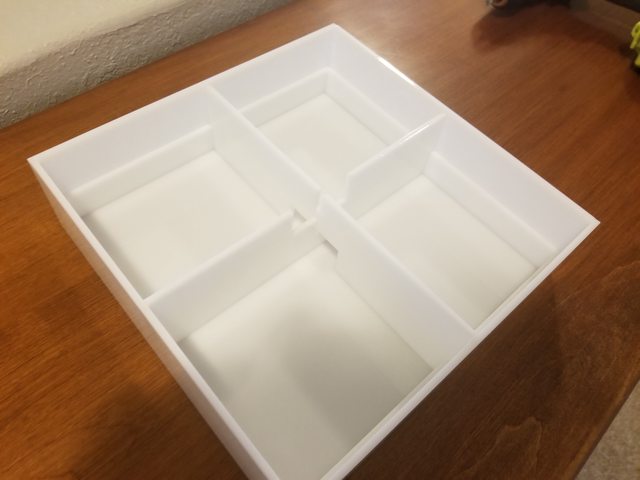
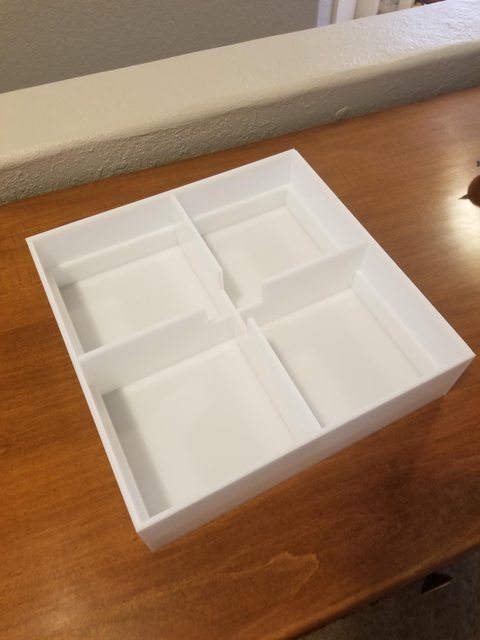
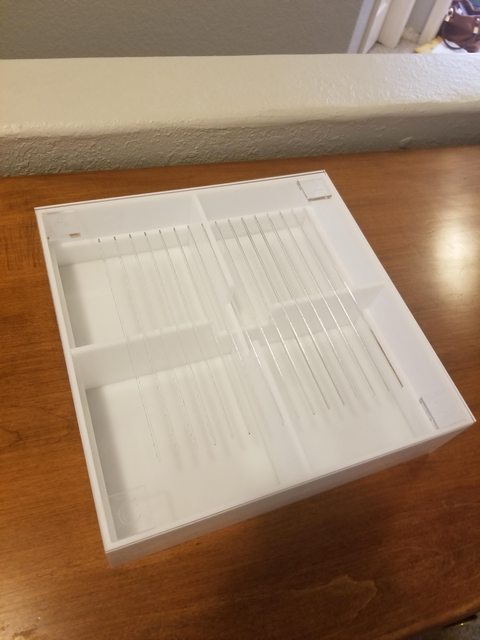
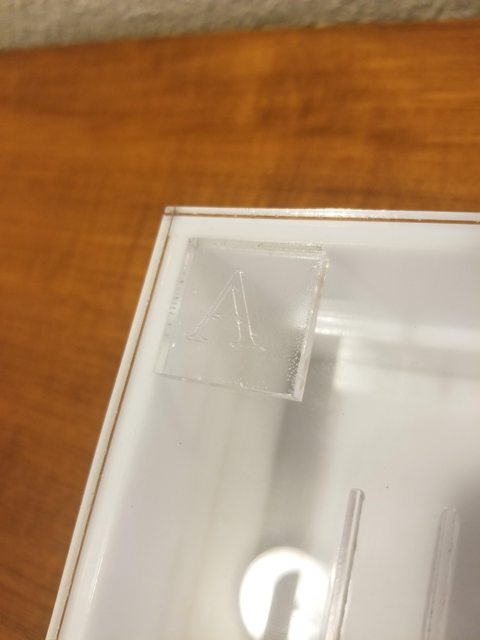 2
2
The variables I am interested most in testing are food, substrate, and temperature.
I plan to test dried shrimp, Hikari crab cuisine, Shrimp King Complete, Shrimp King Yummy Gum, Snowflake (a common shrimp food made from soybean shells), dried leaves, dried mealworms, cofee grounds, a molt from a mantis, roach frass, mushrooms, potato, carrot, and other veggies.
Next step is to gather the specimens. That will be easier said than done in Colorado this time of year. Our weather just exited many near 0 degree days, and has been in the 40s for a week or two. The survive the winter, but I believe their populations will be small and inactive. I may have to wait for a while before they are easily found.
Prior to starting the breeding project I am interested to run some tests to determine the preferred conditions for A. vulgare. Those tests are what this thread is about.
Special thanks to @Orin for writing the wonderful Isopods in Captivity book, and to other scholars like Isabel Caseiro, J.P. Sousa, and S. Santos (Optimization of Culture Conditions of Porcellio dilatatus for Laboratory Test Development, 1999) who have worked on studies that I have reviewed to help me figure out what I want to do. I will do my best to cite where possible. I intend for this to be a pseudo-scientific test; not up to true scientific standards, but following basic requirements like controlling other variables and ensuring the results are statistically significant. I understand there may be a significant difference between the conditions A. vulgare prefer, and the conditions under which they breed best/fastest, but I will only be testing for preference here. I will seek to conduct the test in an ethical fashion by not testing conditions that are known to damage isopods and only collecting specimens from areas where there is already an abundance.
Anyone with knowledge, corrections, links to existing studies, or suggestions, please chime in.
To conduct the study I will be using a choice chamber. Choice chamber experiments are generally conducted by placing specimens into a container with multiple chambers. Each chamber has different conditions. After a period of time, the specimens are counted in each chamber, and a chi-squared analysis is conducted to determine whether the results are statistically significant. For instance, if you place 10 specimens in a two-chamber choice chamber apparatus and each chamber has 5 specimens after a period of time, that would not be statistically significant because we would expect such a result by chance. If you found 10 in one side and 0 in the other, that would be statistically significant. If the results are statistically significant, the isopods prefer the condition where more of them appear. If not, they don't have a strong preference either way. The bigger the sample, the more granular and accurate the results will be.
To conduct the test I have designed a modular choice chamber. It is a 10x10x2.5" box made of white opaque acrylic. The modular dividers allow the box to be divided into 2 connected chambers, 4 connected chambers, or two pair of connected chambers. When I transition the project to breeding, The dividers can separate the box into non-connected chambers as well by inverting them. The lid is made from clear acrylic with narrow vents cut into the lid to allow some ventilation without excessive moisture loss (and hopefully no gnats). Each corner of the lid is labeled with a laser-engraved letter to allow me to easily keep track of each over time. Here are photos of the apparatus:







The variables I am interested most in testing are food, substrate, and temperature.
I plan to test dried shrimp, Hikari crab cuisine, Shrimp King Complete, Shrimp King Yummy Gum, Snowflake (a common shrimp food made from soybean shells), dried leaves, dried mealworms, cofee grounds, a molt from a mantis, roach frass, mushrooms, potato, carrot, and other veggies.
Next step is to gather the specimens. That will be easier said than done in Colorado this time of year. Our weather just exited many near 0 degree days, and has been in the 40s for a week or two. The survive the winter, but I believe their populations will be small and inactive. I may have to wait for a while before they are easily found.




